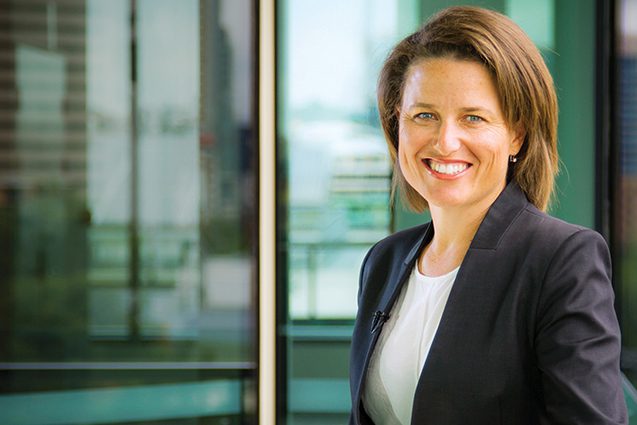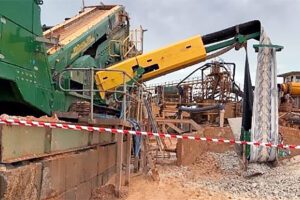Can you tell us a bit about your background in safety?
My first exposure to workplace health and safety was through my role as CEO of the global safety consultancy, Sentis, where I was able to work with organisations to improve their safety outcomes, primarily in the mining and resources industry.
I am now a full-time non-executive director and sit on a number of publicly listed, private company and government boards, most of which operate in hazardous industries.
I have also previously been an independent member of the Queensland Workplace Health and Safety board and am often asked to speak at safety conferences on safety governance and safety leadership for board members and senior executives.
What was the focus of your PhD research?
I focused on safety governance and safety leadership for board members and senior executives. This is an area that is rarely researched with most safety leadership research focusing on supervisors and managers in the field.
The research focused on understanding the role that senior executives – who are generally located some distance away from mine sites, for example – and board members, could move beyond simply ensuring compliance with relevant safety legislation and demonstrate safety leadership through the safety governance frameworks they establish and the methods by which disclosures of safety outcomes are reported.
What safety leadership factors did you identify through your research that are particularly relevant for senior executives and board members?
I examined existing safety leadership theory and identified four criteria – some new and some existing – specifically relevant for senior executives and board members. The first two criteria reflect factors we are already familiar with when we think about safety leadership and include senior executives and board members exhibiting:
- vision – being able to articulate a vision that resonates, inspiring others, setting high standards, establishing expectations and soliciting commitments from others.
- personal commitment – demonstrating a sincere, visible and genuine dedication to safety through a positive attitude, role modelling and solving safety issues.
- I then identified two new criteria specifically focusing on the role of senior executives and board members in safety governance and the important role they play through:
- decision-making – assessing safety issues while providing opportunity for open communication between all levels of an organisation, ensuring safety concerns are heard and employees are included in the process.
- transparency – being willing to be open to scrutiny of safety performance through monitoring and communicating the effectiveness of safety initiatives, formal and informal communications which celebrate safety successes and openly communicate safety challenges as they emerge.
Through my research, I examined ten years of ASX200 annual reports and CSR reports to understand the prevalence of these four criteria of written communications and I also conducted two in-depth case studies with very large ASX200 organisations.
What is safety governance and why is it important?
I have defined safety governance as the relationship between senior executives and board members in the safety leadership of an organisation. It provides the structure through which the vision and commitment to safety is set, the means of attaining safety objectives are agreed, the framework for monitoring performance is established and compliance with legislation is ensured.
READ RELATED CONTENT
- New members join the Board of Professional Engineers(Opens in a new browser tab)
- Weak and Invisible Safety Leadership?(Opens in a new browser tab)
- Beyond the low hanging fruit in workplace safety(Opens in a new browser tab)
Safety governance is incredibly important because ultimately it sets the tone of safety discussions happening inside the boardroom. If safety reporting is focused purely on lag indicators, if there is no recognition of the role of safety leadership, if safety objectives or a safety vision is not set and if monitoring of safety performance is lacking, the safety performance of that organisation is going to be limited.
What are the implications of your research for safety professionals?
Not all board members have industry operational experience and therefore may not have a direct, personal experience of the impact of safety leadership on safety performance. Safety professionals have a valuable opportunity to help educate board members on these issues through ensuring their safety reporting to the board integrates the traditional statistical performance indicators with matters relating to safety culture and safety leadership, as well as more broadly with the strategy of the organisation.
As a board member yourself, what do you believe really effective safety professionals should do when briefing the board?
The best safety professionals I have dealt with understand all the issues confronting the organisation – not just safety. They seek to ensure that the work they are doing, the reports they prepare and the briefings they give all seek to fully integrate safety across all organisational imperatives.
They also understand the context in which the organisation may be operating and if, for example, there is a significant issue confronting the organisation, they are briefing the board on the safety performance of the business in light of those issues.
I think the days of a safety professional simply compiling lag indicators every month and presenting them to the board are long gone.
You have also developed a maturity model for organisations to help better understand where a board may be operating in terms of safety governance. Can you tell us a bit about that?
What I have observed as both a board member myself, and also through my research, is that every organisation, and therefore every board, is on their own safety journey. Understanding and recognising where your board may be at a particular point is important to help identify the best ways to move along the continuum. Beyond ensuring that every organisation complies with their relevant safety legislation (which is a minimum), it is not a matter of one size fits all. The five stages I have identified are:
- Transactional – where the board takes a minimal approach and see safety as a management responsibility with the board generally only engaged after an incident has occurred.
- Compliance – board is focused on their legal responsibilities and will ensure safety reporting is in place (initially focusing largely on lag indicators). Compliance with legislation is the main driver rather than seeking to understand factors such as safety leadership and its impact on safety culture.
- Focused – where boards become more focused on issues beyond compliance, a vision for safety outcomes may be articulated, safety included in the board charter, lead indicators introduced.
- Pro-active – in this stage boards are becoming much more comfortable with their role in safety leadership and may seek even greater safety performance, a board sub-committee focused on safety may be established, Chairman and CEO may make personal commitments to safety in annual reports.
- Integrated – safety is completely integrated with the operations of the organisation. The link between high safety performance and business excellence (or safe production) is understood and accepted.
Now that you have completed this research, what does your future in safety look like for you?
Good question! My primary role is as a board member and I thoroughly enjoy the work I do with the various boards I sit on. However, I am really passionate about this field and so thoroughly enjoy the various conference keynote speaker engagements I am invited to give to meet others in the industry.
I have also been appointed an Adjunct Professor at QUT to continue to focus on driving the links between industry and research in this field. I founded my specialised consulting organisation, Orbitas Group, some years ago to focus purely on safety leadership and safety governance for senior executives and board members. As a result, I travel to incredible locations around the world doing something I love so I hope that may continue for many years to come.
“… the days of a safety professional simply compiling lag indicators every month and presenting them to the board are long gone.”
PROFILE
Dr Kirstin Ferguson
PhD LLB (Hons) BA (Hons) Non-Executive Director
Dr Kirstin Ferguson is a non-executive director, keynote speaker and MC, author and creator of the social media campaign, #CelebratingWomen.
Kirstin is currently the Deputy Chair of the Australian Broadcasting Corporation (ABC) and is a non-executive director and Remuneration Committee Chair of SCA Property Group Ltd (ASX:SCP), EML Payments Ltd (ASX:EML) and Hyne Pty Ltd. She has been a non-executive director for more than a decade with experience on a range of ASX listed, government, private company and not-for-profit boards.
After joining the military at the age of 17, Kirstin graduated as Dux of her Air Force graduating class at the Australian Defence Force Academy. She was then posted to an F-111 Squadron, went on to study law and work as an executive in an international law firm, before becoming CEO of a global consulting business.
As well as Honours degrees in Law and also History, Kirstin has a PhD in corporate culture, leadership and governance for which she has received a number of industry and academic awards. Kirstin is also an Adjunct Professor at the QUT School of Business.














Add Comment